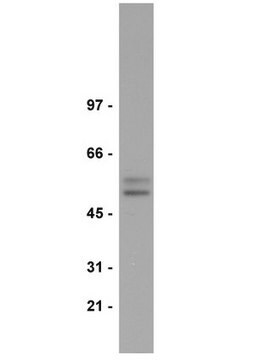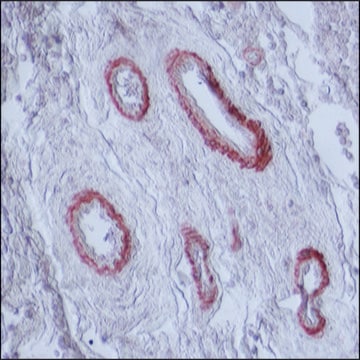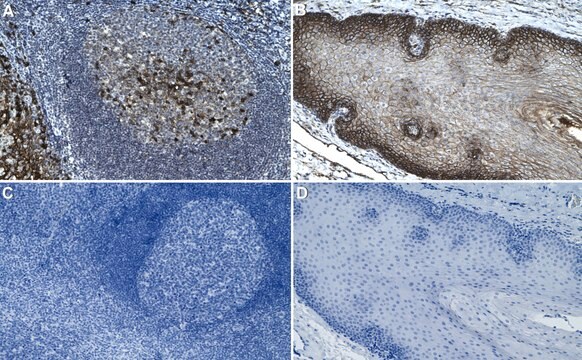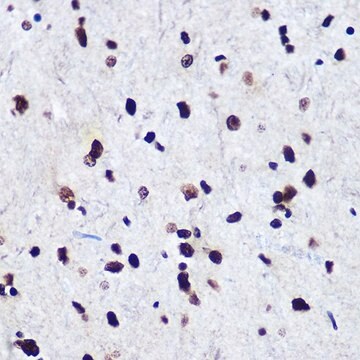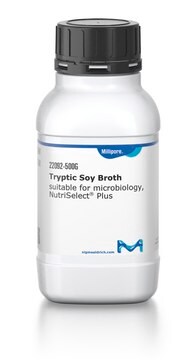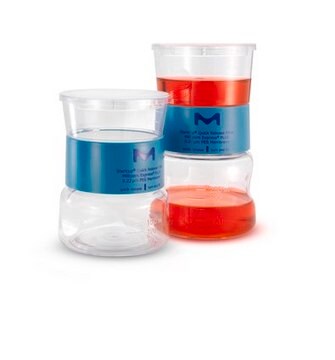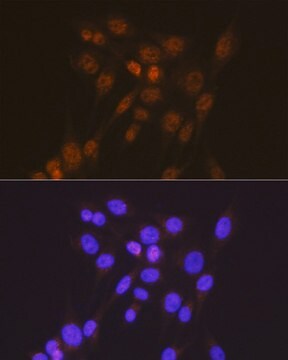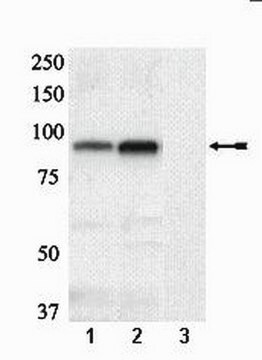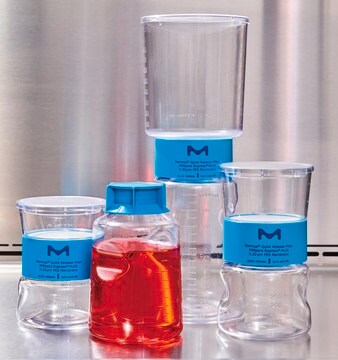一般說明
We are committed to bringing you greener alternative products, which adhere to one or more of The 12 Principles of Green Chemistry.This antibody is Preservative-free, produced without the harm or sacrifice of animals and exceptionally stable to allow for ambient shipping and storage if needed and thus aligns with "Waste Prevention", "Designing Safer Chemicals" and "Design for Energy Efficiency".
Click here for more information.
ZooMAb® antibodies represent an entirely new generation of recombinant monoclonal antibodies.
Each ZooMAb® antibody is manufactured using our proprietary recombinant expression system, purified to homogeneity, and precisely dispensed to produce robust and highly reproducible lot-to-lot consistency. Only top-performing clones are released for use by researchers. Each antibody is validated for high specificity and affinity across multiple applications, including its most commonly used application. ZooMAb® antibodies are reliably available and ready to ship when you need them.
特異性
Clone 2F15 is a ZooMAb® Rabbit recombinant monoclonal antibody that specifically detects Smad2. It targets an epitope within 24 amino acids from the N-terminal half.
免疫原
KLH-conjugated linear peptide corresponding to 24 amino acids from the N-terminal half of human Smad2.
應用
Quality Control Testing
Evaluated by Western Blotting in MCF7 cell lysate.
Western Blotting Analysis: A 1:1,000 dilution of this antibody detected Smad2 in MCF7 cell lysate.
Tested applications
Western Blotting Analysis: A 1:1,000 dilution from a representative lot detected Smad2 in HT1080, C6, and HT29 cell lysates.
Affinity Binding Assay: A representative lot of this antibody bound Smad2 with a KD of 4.4 x 10-8 in an affinity binding assay.
Immunocytochemistry Analysis: A 1:100 dilution from a representative lot detected Smad2 in MCF-7 cells.
Immunohistochemistry (Paraffin) Analysis: A 1:100 dilution from a representative lot detected Smad2 in human testis tissue sections.
Note: Actual optimal working dilutions must be determined by end user as specimens, and experimental conditions may vary with the end user
標靶描述
Mothers against decapentaplegic homolog 2 (UniProt: Q15796; also known as MAD homolog 2, Mothers against DPP homolog 2, JV18-1, Mad-related protein 2, hMAD-2, SMAD family member 2, SMAD 2, Smad2, hSMAD2) is encoded by the SMAD2 (also known as MADH2, MADR2) gene (Gene ID: 4087) in human. Smad2 is a receptor-regulated Smad (R-Smad) that serves as an intracellular signal transducer and transcriptional modulator activated by transforming growth factor-b (TGF-b) and activin type 1 receptor kinases. In the absence of TGF-b, it exists as a monomer and forms a heterodimer with Smad4 in the presence of TGF-b. It is expressed at high levels in skeletal muscle, endothelial cells, heart, and placenta. It contains one Mad homology (MH) 1 domain (aa 10-176), one MH2 domain (aa 274-467) and a PY motif (aa 221-225). Cytoplasmic Smad2 is directly phosphorylated on Ser465/Ser467 by TGF-b receptor kinase I. These C-terminal phosphoserines of R-Smads are recognized by the MH2 domain of Smad4 that enables them to form a heterodimeric complex, which translocates to the nucleus where Smad proteins bind to their cognate DNA binding sites with low affinity. This binding is further enhanced in the presence of transcriptional co-activators. Upon dephosphorylation by phosphatase PPM1A, Smad2 is released from the Smad2/Smad4 complex and is exported out of the nucleus. Acetylation of lysine 19 by coactivators in response to TGF- signaling is shown to increase its transcriptional activity. This ZooMAb® recombinant monoclonal antibody, generated by our propriety technology, offers significantly enhanced specificity, affinity, reproducibility, and stability over conventional monoclonals. (Ref.: Lin, X., et al. (2006). Cell. 125(5); 915-928; Simonsson, M., et al. (2006). J. Biol. Chem. 281(52); 39870-39880).
外觀
Purified recombinant rabbit monoclonal antibody IgG, lyophilized in PBS with 5% Trehalose, normal appearance a coarse or translucent resin. The PBS/trehalose components in the ZooMAb formulation can have the appearance of a semi-solid (bead like gel) after lyophilization. This is a normal phenomenon. Please follow the recommended reconstitution procedure in the data sheet to dissolve the semi-solid, bead-like, gel-appearing material. The resulting antibody solution is completely stable and functional as proven by full functional testing. Contains no biocide or preservatives, such as azide, or any animal by-products. Larger pack sizes provided as multiples of 25 μL.
重構
300 μg/mL after reconstitution at 25 μL per vial. Please refer to guidance on suggested starting dilutions and/or titers per application and sample type.
儲存和穩定性
Recommend storage of lyophilized product at 2-8°C; Before reconstitution, micro-centrifuge vials briefly to spin down material to bottom of the vial; Reconstitute each vial by adding 25 μL of filtered lab grade water or PBS; Reconstituted antibodies can be stored at 2-8°C, or -20°C for long term storage. Avoid repeated freeze-thaws.
法律資訊
ZooMAb is a registered trademark of Merck KGaA, Darmstadt, Germany
免責聲明
Unless otherwise stated in our catalog or other company documentation accompanying the product(s), our products are intended for research use only and are not to be used for any other purpose, which includes but is not limited to, unauthorized commercial uses, in vitro diagnostic uses, ex vivo or in vivo therapeutic uses or any type of consumption or application to humans or animals.

